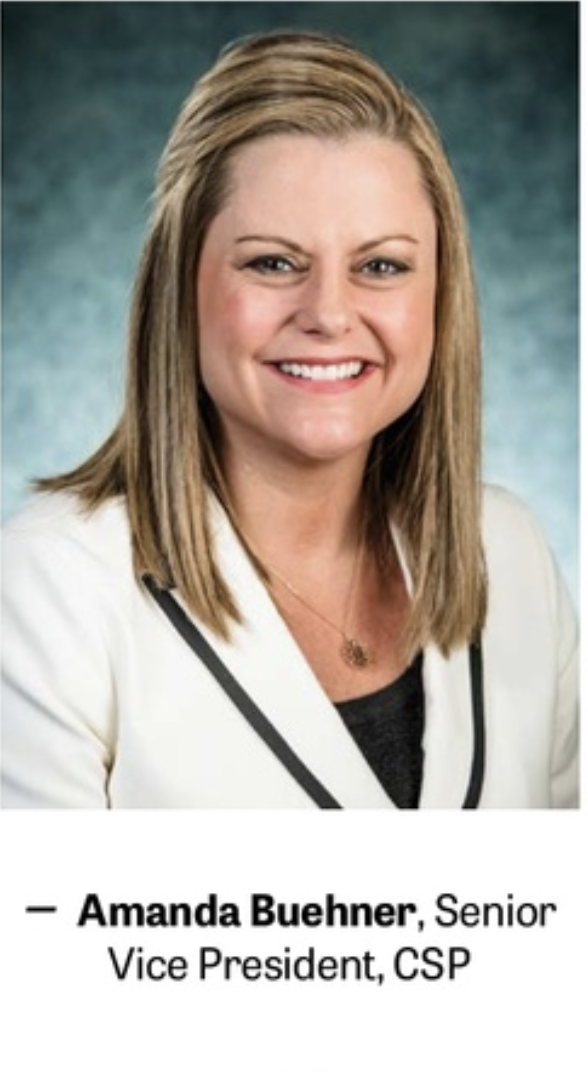Amanda Buehner, senior vice president at CSP, which produces events and media for the convenience-store and petroleum-retailing industry, designed a new event for women in that industry with three questions in mind: How do we engage event audiences throughout the year? How can we create a framework to help the industry address significant challenges? How do we create digital content around the event?
To address these issues, Buehner designed the conference, C-Store Women, with a key central element: Power Teams. The event was capped at 160 people, and each attendee was assigned to a Power Team of eight participants that had an even mix of convenience-store delegates and sponsors. Attendees registered knowing that they would be part of a Power Team, answering questions ahead of time about their interests, background, and strengths that helped Buehner’s team decide on the groupings.
Each of the 20 Power Teams had one issue to work on, such as best practices for leading a team, developing a personal brand, balancing work and family, and tools for being taken seriously by leadership.
 The ultimate goal, says Buehner, is moving the needle on female leadership in the convenience-store industry—women currently hold only three percent of C-suite positions—but that cannot be accomplished at a two- or three-day in-person event. While members of each Power Team were introduced to one other and their topic while on site at the Napa Valley, Calif., event, the plan from the outset was for groups to continue their conversations online on a quarterly basis.
The ultimate goal, says Buehner, is moving the needle on female leadership in the convenience-store industry—women currently hold only three percent of C-suite positions—but that cannot be accomplished at a two- or three-day in-person event. While members of each Power Team were introduced to one other and their topic while on site at the Napa Valley, Calif., event, the plan from the outset was for groups to continue their conversations online on a quarterly basis.
To set the teams up for success, each one has an “ambassador” from Buehner’s internal staff and access to a dedicated Microsoft Teams channel. Interestingly, each person on a Power Team is given a role—facilitator, reporter, scheduler, presenter, and so on—as a further engagement strategy.
In March, Buehner reported that since the November in-person conference, all Power Teams had met at least twice while some were meeting monthly. This fall, the effort will come full circle when each 2023 Power Team gets five minutes to present on the main stage at CSW 2024. Buehner says that for those presentations, “each team’s mission is to provide an overview of their issue, one slide on what they’ve learned, and one slide on three actionable items every person can take back to their organization to keep making a shift toward more women in leadership positions.”
The conversations that the Power Teams are having around industry challenges is also reaching a larger audience. Editors from CSP, a sister media brand for the convenience-store industry, are interviewing the Power Teams about their progress and advice. Their thought leadership is being shared in e-newsletters, social media, and other digital products, not only creating content for the brand but also amplifying the conversation beyond CSW participants.
While CSW was a relatively small group, Buehner believes the Power Teams concept is scalable to much larger conferences, given some customization. For example, Power Teams could be opt-in rather than required, or could be limited to one demographic; for instance, CEOs. In fact, several events at CSW’s parent company Informa (also the parent company of MeetingsNet) are working on versions of the Power Teams idea. Any conference that has constituents with issues they want to solve but that doesn’t have a year-round platform for discussion could consider the Power Teams model, says Buehner.
Read more in our series on effective pre- and post-meeting engagement:
Want Meetings with Year-Round Impact? Use These Strategies
Powerful Pre-Meeting Engagement: A Case Study
7 Tips for a Mentorship Program





